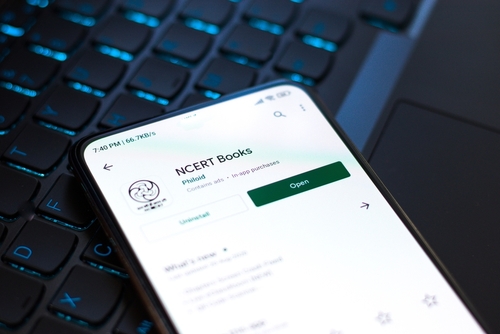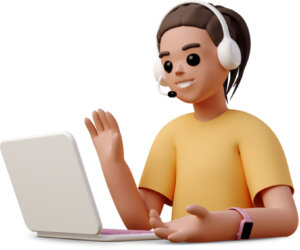
📖 Table of Contents
The use of cutting-edge technologies has become essential in the ever-changing field of medical education to improve the educational experience for future medical professionals. Virtual reality (VR) is one such ground-breaking invention that is causing waves in the industry. Let’s explore the revolutionary potential of virtual reality and how it is changing medical education.
The Evolution of Medical Education: A Virtual Revolution
Virtual reality (VR) has become a major departure from traditional teaching methods in the ever-changing field of medical education, bringing in a transformative era. The transition from lectures and textbooks to dynamic, immersive learning environments has not only transformed the way medical concepts are understood, but it has also accelerated the development of critical skills via lifelike simulations. With the integration of telemedicine platforms, this virtual revolution transcends the boundaries of the classroom and bridges geographical divides. Let’s examine how virtual reality (VR) is changing healthcare professional training and bringing in a new era of comprehensive, hands-on learning experiences as we delve into the complex evolution of medical education.
1. Engaging Learning Environments:
Medical education has historically placed a strong emphasis on lectures and textbooks, which has occasionally limited the depth of understanding. In order to help students learn about the human body, illnesses, and medical procedures in three dimensions, virtual reality creates immersive environments. This interactive, hands-on learning environment promotes a deeper understanding of difficult medical concepts.
2. Realistic Simulations for Skill Development:
Simulating real-world situations is one of VR’s many noteworthy benefits. Thanks to technological advancements, medical students can now safely practice surgery, diagnose diseases, and participate in patient care simulations. By doing this, they develop their confidence and skill sets in preparation for moving into actual clinical settings.
3. Virtual Reality Bridging the Gap with Telemedicine:
Virtual reality has shown to be a very useful tool for reducing the distance between experts and students. With virtual reality (VR) telemedicine platforms, students can virtually enter operating rooms, clinics, and medical facilities across the globe to experience a variety of medical procedures and approaches.
Applications Across the Medical Spectrum
Virtual reality (VR) applications in medicine have taken a revolutionary turn and gone beyond traditional boundaries to provide a range of life-changing experiences in multiple fields. Virtual reality has significantly changed medical education, from the complex worlds of surgical training to the immersive study of human anatomy. It goes beyond technical mastery to the details of patient care, cultivating empathy and improving communication skills via lifelike simulations. Let us explore the various uses of virtual reality in the medical field, where teaching and innovation combine to shape the future of medical professionals.
1. Surgical Training and Planning:
Through virtual reality, doctors in training and experienced surgeons can experience complex surgical procedures firsthand. VR improves accuracy and dexterity, which in turn improves patient outcomes in tasks like practicing surgeries and dissecting virtual cadavers.
2. Anatomy Exploration:
With virtual reality, anatomy studies come to life. In a way that is not possible with traditional textbooks, students can investigate the human body layer by layer and gain an understanding of the spatial relationships between organs and tissues.
3. Patient Empathy and Communication Skills:
In the healthcare industry, empathy and effective communication are critical. Virtual reality simulations have the potential to replicate situations in which students engage with virtual patients, refining their bedside manners and social skills and promoting a patient-centered approach.
Overcoming Challenges and Expanding Access
Although virtual reality (VR) has many advantages for medical education, there are some drawbacks that should be carefully considered, including cost, technological accessibility, and integration with current curriculum. These obstacles are progressively fading, though, as technology develops and becomes more widely available, opening the door for commercial adoption.
Looking Ahead: The Future of Medical Education
As we venture further into the 21st century, the fusion of technology and education is inevitable. Virtual Reality stands at the forefront, offering a dynamic, immersive, and efficient approach to medical learning. The ongoing evolution of VR applications holds the promise of producing a generation of healthcare professionals who are not only well-versed in theoretical knowledge but are also adept at applying their skills in diverse and realistic scenarios.
To sum up, the incorporation of VR into medical education represents a revolutionary change in the way the future workforce in healthcare is trained. VR is giving medical professionals the opportunity to learn through an immersive, captivating, and practical experience. This will help them become more than just knowledgeable professionals, but also skilled at navigating the complexities of real-world healthcare challenges.
Ready to delve deeper into the dynamic world of medical education and groundbreaking advancements? Stay ahead of the curve by exploring our engaging and insightful blogs at futuretabib. Uncover the latest in virtual reality applications, surgical training, anatomy exploration, and more. For a future where knowledge meets innovation, stay tuned with futuretabib.





